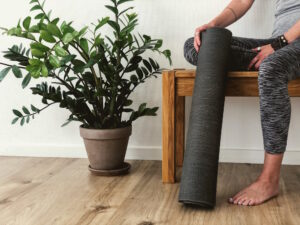
In the realm of Pilates, where precision, control, and mindful movement converge, the role of breathing techniques is nothing short of profound. Every inhalation and exhalation becomes a rhythmic companion to the deliberate motion of your body, infusing each core exercise with purpose and synergy. The intricate dance between breath and movement in Pilates is not merely a coincidental pairing—it is a deliberate and integral component that enhances the efficacy and depth of your practice. In this exploration of the role of breathing techniques in Pilates core exercises, we delve into the significance, types, and mechanics of breathing, unraveling the tapestry of this symbiotic relationship.
Why Is Breathing Important During Pilates?
The connection between breath and movement is central to the essence of Pilates. Breathing enhances the mind-body connection, serving as a conduit for energy, oxygen, and focus. Integrating proper breathing techniques optimizes core engagement, stability, and alignment. By coordinating breath with movement, you amplify the efficacy of each exercise, fostering a seamless connection between muscle engagement and conscious control.
What Type of Breathing Technique Is Used in Pilates?
The type of breathing technique employed in Pilates is referred to as “lateral thoracic breathing” or “lateral ribcage breathing.” This technique involves expanding the ribcage laterally during inhalation, allowing the lower ribs to widen outward, and contracting the ribcage during exhalation. This lateral expansion facilitates diaphragmatic movement and ribcage mobility, creating space for breath within the torso.
In contrast to shallow chest breathing, lateral thoracic breathing encourages diaphragmatic engagement and activation of the deep core muscles, including the transverse abdominis and pelvic floor. It complements the controlled movements of Pilates exercises, enhancing both stability and fluidity.
How Do We Breathe While Performing Core Exercises?
The coordination of breath with movement varies based on the nature of the exercise. In general, the principle is to inhale during the preparatory phase or relaxation phase of an exercise and exhale during the effort or exertion phase. For example, during the curl-up phase of a Pilates roll-up exercise, inhale as you prepare to move and exhale as you curl up, engaging the core and initiating the movement.
Breathing rhythm is often deliberate and connected to the rhythm of the exercise itself. The breath provides a natural cadence, guiding the pace and intensity of your movements. While the specifics of breath timing may vary, the central tenet remains: breath supports movement and movement enhances breath.
Why Is Pilates Breathing Different?
The distinct breathing techniques in Pilates distinguish it from other forms of exercise. The emphasis on lateral thoracic breathing encourages core activation, fosters spinal alignment, and amplifies the engagement of deep stabilizing muscles. This type of breathing complements the precision and controlled movements characteristic of Pilates exercises.
Unlike shallow chest breathing, which can lead to tension and inhibited core engagement, Pilates breathing facilitates relaxation and efficient oxygenation of muscles. It encourages a mindful presence in the moment, aligning your mental focus with your physical efforts.
In the symphony of Pilates, the breath emerges as a conductor, guiding and synchronizing the movements of your body. Through its unique lateral thoracic technique, it fuels core engagement, enhances stability, and elevates the mind-body connection. With each inhale and exhale, you infuse your Pilates practice with intention and vitality, transcending mere physical exercise to embrace a holistic journey of growth, transformation, and inner alignment.
As you embark on your Pilates journey, remember that every breath you take is a thread woven into the fabric of your practice. By embracing the intricacies of Pilates breathing techniques, you elevate your core exercises to an artful fusion of movement, breath, and self-awareness.
